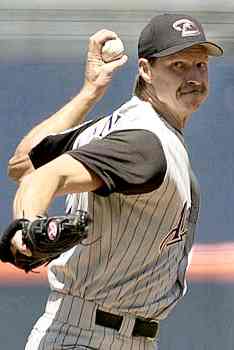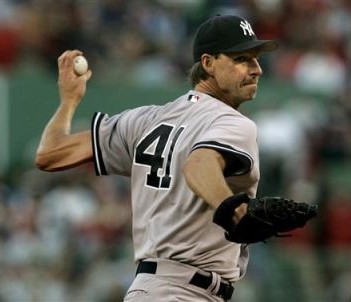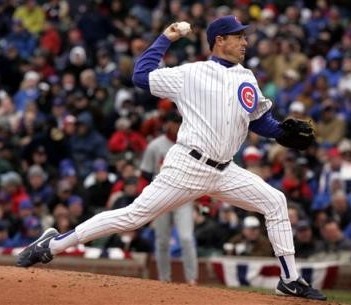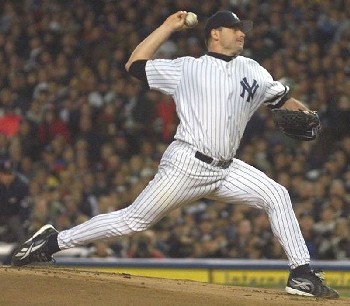Little League Baseball and
Proper Pitching Mechanics
5/7/2007
Updated 7/15/2009
I was recently asked my opinion
of the pitching mechanics that Little League Baseball advocates in
its
Pitch Count Publication. All I can say is that this document
is full of problematic, but admittedly very common, advice. Here
are some examples of what I am talking about (in bold) with my comments below them (in plain
text).
Page 10: From the leg lift
position, the pitcher should drive off the back leg into the
stride. The extent of the drive is the pitchers preference.
There are a couple of problems
with this advice. First, major league pitcher's don't drive at this point (not even
drop and drivers like Tom Seaver, Roy Oswalt, and Tim Lincecum).
Instead, what they do is slide their hips sideways toward the target. Second,
they slide their hips toward the target through the top of the leg
lift rather than coming to a static balance point before starting
their hip slide.
Page 11: Good advice is to use
the pitcher’s physical attributes when making this decision. If
the pitcher is tall, then the “tall and fall” method might be
desired. If the pitcher is not tall then the “drop and drive”
method might be desired.
I teach pretty much all of my
guys to use tall and fall. It doesn't depend on their physical
stature.
There are two reasons for this.
First, drop and drive can cause problems with rushing
if people don't drive at the right time. Second, and more
importantly, only 5 to 10 percent of major league pitchers
actually drop and drive.
Page 11: The only problem with
the drop and drive method is that some pitchers have a tendency to
drop and drag the elbow during the throwing motion. A low elbow at
delivery of the pitch can lead to arm and shoulder injuries. The
“tall and fall” method will not necessarily keep the elbow from
dragging, but it makes it easier for the pitcher to stay on top of
the ball.
Dropping the elbow rarely happens above the age of 7 or 8. Above
that age, most pitchers are strong enough to keep their elbows
from dropping too much. As a result, dropping the elbow is
dramatically overstated as a problem. What's more, as the photos
below show, guys like Randy Johnson drop their elbows, albeit at
the right moment.

Randy Johnson

Randy Johnson
I believe that, once a pitcher is older than 8 or so, having the
PAS elbow too high is a much greater risk than is having the PAS
elbow too low.
I also think the writer of this piece doesn't
understand that arm slot is driven by the tilt of the shoulders,
not by the angle of the elbow.
Page 11: As the pitcher lifts
the leg and takes a comfortable stride, the hands must separate
and reach what is called the launch position. The pitcher must
concentrate on turning the thumbs in toward the body (down) and
turning the palms away from the body when separating the ball from
the glove. This action helps to get both the glove-side elbow and
the throwing-arm elbow to shoulder height.
Breaking the hands thumbs down
isn't necessary and can cause the elbows to get too high. In the
worst case, you can end up making the
Inverted W. Also, you DO NOT
want the PAS elbow to get to shoulder height. That's not what Greg
Maddux or Randy Johnson do. Instead, their elbows never get to,
much less above, the level of their shoulders.
Page 11: There are three
checkpoints in the launch position.
One is to be sure the
glove-side elbow is at shoulder height when the pitcher is ready
to deliver the ball. This will give the pitcher a better balance
and will aid in keeping the throwing elbow from dragging.
The
second checkpoint involves the throwing elbow at or slightly above
shoulder height. If the elbow drops or drags when throwing the
ball, elbow and shoulder problems are soon to follow.
Finally and
most important, make sure the ball is facing away from the catcher
toward second base. Keep the elbow slightly bent in an “L” shape.
If the ball is not facing away, the elbow will have a tendency to
drag below shoulder height as the ball is thrown.
These paragraphs make it clear that the writer doesn't know what
he's talking about. He obviously has never looked at high speed
film and doesn't know how pitchers actually throw the ball.
Instead, he's just regurgitating the conventional wisdom (which in
many cases is wrong).
The truth is that the writer is describing mechanics that do not reflect
what guys like Greg Maddux and Roger Clemens do.
As the photos
below demonstrate, they do not show the ball to 2B, they do not
take their elbows above the level of their shoulders, and they do
not make the "L".

Greg Maddux

Roger Clemens
Page 11: With the ball facing away in the correct position, as
the hips are rotated to the plate the ball also will automatically
be rotated toward the plate.
The writer doesn't understand that the PAS upper arm externally
rotates and the PAS forearm lays back as the shoulders start to
rotate. Instead, he thinks that the 90 degree bend of the elbow is
maintained throughout the throw.
|